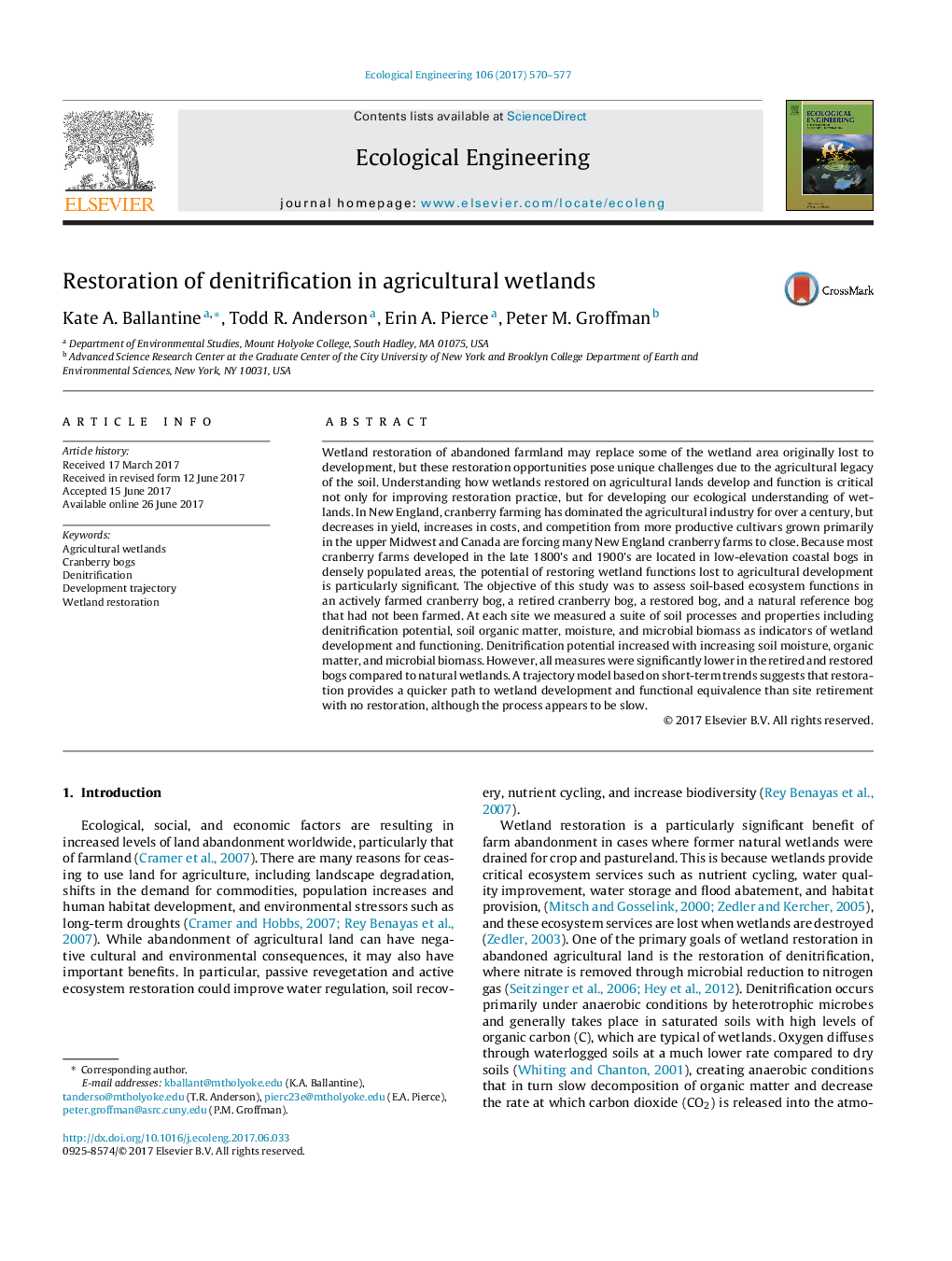| کد مقاله | کد نشریه | سال انتشار | مقاله انگلیسی | نسخه تمام متن |
|---|---|---|---|---|
| 5743875 | 1412322 | 2017 | 8 صفحه PDF | دانلود رایگان |
- Farm retirement provides an opportunity for restoration of lost wetland functions.
- Retirement versus restoration of cranberry farms yield different development trajectories.
- Denitrification was driven by soil moisture, organic matter, and microbial biomass.
- Slow development of soil organic matter due to farming legacy limits function.
- Restored farms are projected to function like natural wetlands before retired farms.
Wetland restoration of abandoned farmland may replace some of the wetland area originally lost to development, but these restoration opportunities pose unique challenges due to the agricultural legacy of the soil. Understanding how wetlands restored on agricultural lands develop and function is critical not only for improving restoration practice, but for developing our ecological understanding of wetlands. In New England, cranberry farming has dominated the agricultural industry for over a century, but decreases in yield, increases in costs, and competition from more productive cultivars grown primarily in the upper Midwest and Canada are forcing many New England cranberry farms to close. Because most cranberry farms developed in the late 1800's and 1900's are located in low-elevation coastal bogs in densely populated areas, the potential of restoring wetland functions lost to agricultural development is particularly significant. The objective of this study was to assess soil-based ecosystem functions in an actively farmed cranberry bog, a retired cranberry bog, a restored bog, and a natural reference bog that had not been farmed. At each site we measured a suite of soil processes and properties including denitrification potential, soil organic matter, moisture, and microbial biomass as indicators of wetland development and functioning. Denitrification potential increased with increasing soil moisture, organic matter, and microbial biomass. However, all measures were significantly lower in the retired and restored bogs compared to natural wetlands. A trajectory model based on short-term trends suggests that restoration provides a quicker path to wetland development and functional equivalence than site retirement with no restoration, although the process appears to be slow.
Journal: Ecological Engineering - Volume 106, Part A, September 2017, Pages 570-577
